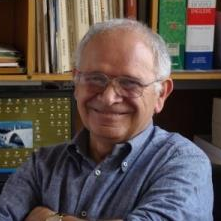Calcite
A special issue of Minerals (ISSN 2075-163X). This special issue belongs to the section "Crystallography and Physical Chemistry of Minerals & Nanominerals".
Deadline for manuscript submissions: closed (20 December 2019) | Viewed by 5644
Special Issue Editors
Interests: crystal growth; crystallography; growth kinetics; crystal morphology; biomineralization
Interests: crystal growth; epitaxy; surface; interface; carbonates; sulfates; phosphates; oxalates
Special Issues, Collections and Topics in MDPI journals
Interests: crystal growth; epitaxy; surface; interface; calcite; gypsum; apatite; zeolite
Special Issues, Collections and Topics in MDPI journals
Special Issue Information
Dear Colleagues,
Calcite (CaCO3), which provided the creative impulse to René Juste Haüy to imagine the crystal state as a periodic discontinuity of solid matter made by “molécules intégrantes”, is a widespread mineral occurring in nature, both in the inorganic geological world (in sedimentary and metamorphic rocks, in deposits from hot springs, in caverns as stalactites and stalagmites, and in volcanic or mantle-derived rocks) and in living organisms (marine and egg shells, bones, teeth). Owing to its bi-refringence, calcite has been used in optical microscopy and in military weaponry. It also occurs as alabaster and marble in cultural heritage. Finally, it has a wide range of applications, such as in soil remediation and stabilization and concrete repair.
This Special Issue is devoted to calcite, and will focus on:
- Crystallography, bulk and surface physical properties, twinning (geometry and growth)
- Equilibrium and growth morphology (theoretical aspects, habit change due to the impurity adsorption /absorption)
- Phase relationships with its polymorphs (vaterite, calcite) and its amorphous precursors
- Biomineralization
- Occurrence in the inorganic geological word
- Modern applications in industry and environment
- Cultural heritage: Art and remediation.
Prof. Dr. Dino Aquilano
Prof. Dr. Marco Bruno
Dr. Linda Pastero
Guest Editors
Manuscript Submission Information
Manuscripts should be submitted online at www.mdpi.com by registering and logging in to this website. Once you are registered, click here to go to the submission form. Manuscripts can be submitted until the deadline. All submissions that pass pre-check are peer-reviewed. Accepted papers will be published continuously in the journal (as soon as accepted) and will be listed together on the special issue website. Research articles, review articles as well as short communications are invited. For planned papers, a title and short abstract (about 100 words) can be sent to the Editorial Office for announcement on this website.
Submitted manuscripts should not have been published previously, nor be under consideration for publication elsewhere (except conference proceedings papers). All manuscripts are thoroughly refereed through a single-blind peer-review process. A guide for authors and other relevant information for submission of manuscripts is available on the Instructions for Authors page. Minerals is an international peer-reviewed open access monthly journal published by MDPI.
Please visit the Instructions for Authors page before submitting a manuscript. The Article Processing Charge (APC) for publication in this open access journal is 2400 CHF (Swiss Francs). Submitted papers should be well formatted and use good English. Authors may use MDPI's English editing service prior to publication or during author revisions.
Keywords
- CaCO3 Polymorphs
- Growth Morphology
- Biomineralization






